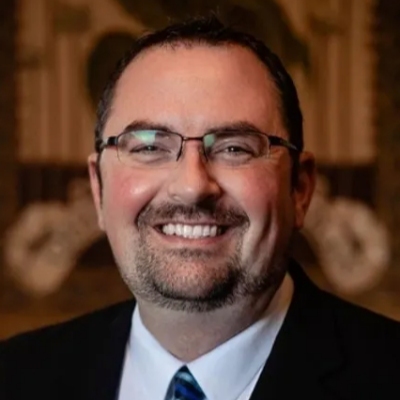“Can you share a personal experience where you had to recover from an SEO setback? What was the biggest lesson you learned and how did it change your approach to SEO?”
Here is what 15 thought leaders had to say.
Site Migration Disaster Reveals Technical SEO Importance
I lost around 70% of traffic on a core lead-gen page after a poorly handled site migration. The dev team pushed changes without setting up redirects or keeping the original URL structure. So rankings tanked almost overnight. It was a wake-up call on how fragile organic visibility gets when technical SEO is ignored.
To recover, I restored the original URL paths and fixed broken internal links. I also rebuilt the internal linking structure to send authority back to priority pages. Then I manually re-submitted important URLs through Search Console to speed up reindexing. I even ran paid traffic tests to see which versions of the page were still converting. That way I knew exactly what to focus on.
The biggest lesson was to stop assuming technical SEO is just covered. Because it’s not. It’s the foundation everything else sits on. After that, every deployment got QA’d for redirects, canonicals, and crawlability. CMS plugins miss stuff all the time. Especially on big sites. So now everything gets reviewed before going live.
That whole mess also changed how content gets built. Instead of chasing high-volume keywords, the focus shifted to modular content clusters tied to real business goals. Each piece is built to be portable. Easy to update, re-index, or repurpose if the platform or structure changes. Because traffic by itself doesn’t mean much. Stability, intent, and conversion are what actually move the needle.
Josiah Roche
Fractional CMO, JRR Marketing
Stale Content Tanks Rankings After Core Update
Absolutely—one of the biggest SEO setbacks I faced was when a client’s site took a hit after a Google core update. Overnight, we saw a 30% drop in organic traffic. The gut-punch? Most of the content that dropped was what we thought was our best-performing evergreen material. At first, we assumed it was algorithm chaos, but after digging in, we realized something simple but critical: the content had become stale. The advice was outdated, links were broken, and competitors were now offering richer, more current info.
We rolled out a recovery plan: updated facts, added internal links, included clearer headings, and tightened up CTAs. Then we published revised dates and re-submitted the key URLs in Search Console. It took about five weeks, but rankings started climbing again. The biggest lesson? Never treat top-performing content like it’s “done.” SEO isn’t just about creating—it’s about maintaining. Now, content updates are part of every quarterly SEO sprint. It changed how I think about long-term rankings completely.

Marketing & PR Coordinator, Web Search Optimisation
Diversified SEO Strategy Outperforms Single-Tactic Approach
Recovering from an SEO setback taught me that diversification isn’t just for investment portfolios—it’s crucial for search strategies too.
A few years back, we had a client whose traffic plummeted 60% overnight after a major algorithm update. We had been focusing heavily on optimizing for a specific set of keywords that were performing well, putting most of our efforts into a single basket. When Google changed how they valued those ranking signals, we were left scrambling.
The recovery process was humbling but enlightening. We rebuilt their strategy from the ground up, focusing on creating a more balanced approach with multiple traffic sources—organic search across various keyword clusters, local SEO, quality backlinks from industry publications, and content that served real user needs rather than just search engines.
It took three months of intense work, but we not only recovered the lost traffic but exceeded previous levels by 30%. The biggest lesson? SEO isn’t about finding one magic tactic that works—it’s about building a resilient strategy that can weather algorithm changes.
This experience fundamentally changed how we approach SEO. Now we create strategies that distribute risk across multiple channels and focus more on user intent than chasing algorithm patterns. When Google makes changes now, we might see small fluctuations, but never the cliff-edge drops that come from putting all your eggs in one basket.

Founder and CEO, Origin Web Studios
Quick Backlink Schemes Fail Long-Term SEO Test
One of my biggest SEO setbacks came from buying too many backlinks too quickly for a client. At the time, we were trying to boost authority fast, but the links we got were mostly low-value, thin content placements—too much of the 80/20 type of backlinking. On paper, it looked okay. But Google clearly didn’t see it as natural.
Looking back, I can see the mistake: it wasn’t just the quantity, it was the quality and context. The backlinks lacked real content around them, and the whole thing felt forced. It made sense that Google didn’t reward it.
That experience completely changed how I approach SEO now. I’ve shifted to a slower, more balanced strategy—investing in consistent, high-quality content and earning backlinks more organically over time. Not only does this approach work better, but it’s also more sustainable and far less risky.
Lesson learned: There are no real shortcuts in SEO. Authority has to be earned, not bought.

Senior Marketing Consultant, BeastBI GmbH
Competitor Content Outranks Static Top-Performing Page
Google nuked one of our top pages overnight. Traffic tanked, and clients noticed. That page used to bring in most of the leads for a dental client—then, gone. No warning. No big update. We looked into everything: backlinks, crawl errors, Core Web Vitals. Turns out, a competitor spun a better version of our content and outranked us. Same topic, more depth, tighter structure.
I thought ranking #1 meant we were done. Now we treat SEO like maintenance. Pages that perform well still get updated—new stats, better examples, sharper copy. If we don’t improve them, someone else will. SEO isn’t about winning once. It’s about defending your spot every month.

UGC manager/Marketing manager, Rathly
Template Content Weakens Local Search Authority
One personal experience that stands out during my time as the UK Marketing Manager at TITAN Containers in Ireland involved an unexpected drop in local search visibility for one of our newer self-storage sites near Cork. We had launched a strong content push and local listing campaign, but despite the initial traction, we noticed our Google rankings dropped significantly within a few weeks, particularly for high-intent keywords like “container storage Cork” and “self storage near me.”
After a thorough audit, we discovered that some of the content had been overly templated across multiple site pages, leading to issues with duplicate content. Additionally, there were inconsistencies in our Google Business Profile categories and citations across key directories, which confused search engines and weakened our local authority.
To recover, we rewrote all location-specific landing pages with unique, hyper-local content. We emphasized landmarks, nearby communities, and location-specific customer use cases. We also cleaned up our NAP (name, address, phone) consistency across directories and used structured data to reinforce our location and services to Google. We engaged with local blogs and small Irish business directories to rebuild regional relevance through backlinks.
The biggest lesson I learned was not to rely too heavily on scalable templates, even if they seem efficient at first. Google continues to reward authenticity and local relevance, especially in markets like Ireland, where customers value personalized, community-oriented messaging. Since then, our approach to SEO has been more granular, focusing on depth over speed and quality over uniformity. That shift has helped us consistently perform well in both urban and regional markets across Ireland.

UK Marketing Manager, TITAN Containers
Algorithm Update Shifts Focus to User Experience
I once faced a significant SEO setback when a major Google algorithm update caused a sharp drop in organic traffic for a client’s website. We had been relying heavily on keyword targeting, but the update shifted the focus toward quality content and user experience, which exposed some gaps in our strategy. The biggest lesson I learned was that SEO is never just about keywords—it’s about creating content that genuinely adds value and engages users. After this setback, I shifted our approach to focus more on comprehensive content strategies, improving site structure, and enhancing user experience. I began prioritizing factors like page speed, mobile optimization, and intent-based content, which helped the website recover and ultimately perform better than before. This experience taught me that SEO is a long-term game and requires ongoing adaptability to stay aligned with both search engine algorithms and user expectations.

CMO, Entrepreneur, and Content Creator, AIG MARKETER
Intent-Driven SEO Transforms Traffic into Results
The biggest lesson I learned was that chasing search volume without aligning to user intent leads to traffic, not results. Early on, I focused on ranking for high-volume keywords, but the traffic rarely converted. Shifting to intent-driven SEO—understanding what users truly want at each stage of the funnel—transformed my strategy. In addition to revising content to match searcher goals, I prioritized long-tail and problem-solving keywords. Furthermore, I integrated conversion paths into content, which boosted both engagement and ROI. This shift taught me that relevance always outperforms reach in sustainable, effective SEO.

Founder, Twibi
SSL Certificate Issue Blocks Website Indexing
I recently launched a group practice’s website. Their website was still not indexed a few weeks after the launch. After some digging in Google Search Console, I realized that their www-version of the website was not redirected correctly in their DNS servers and because of that, an SSL certificate wasn’t issued for www.theirdomain.com. Google viewed the www-version of their website as unsecure and didn’t crawl or index their website. After fixing their redirect & security certificate, I manually requested indexing for each of their webpages. This helped speed up the process of indexing their new website!

Owner, Web Designer, Tracy Mak Studio
Website Redesign Removes Critical Local Keywords
As a small, locally owned storage facility here in Macedonia, Ohio, our online visibility is crucial, especially since we’re competing with big-box storage brands that have national advertising budgets. A couple of years ago, we made some major changes to our website to modernize the look and improve mobile performance. Unfortunately, during that process, we accidentally removed a few key location-based keywords from the homepage and didn’t properly redirect some older pages that had been ranking well for terms like “Macedonia storage units” and “storage near me.”
The immediate impact was hard to miss. Within weeks, our Google rankings dropped for several high-intent keywords, and call volume dipped noticeably. We weren’t getting the same number of online reservations or quote requests, and I could feel the momentum shift. It was frustrating, especially since the changes were made with good intentions.
To recover, I worked closely with a local SEO consultant who helped me audit the site. We reinstated lost keyword content, restructured our internal links, set up proper 301 redirects, and made sure our Google Business Profile was fully optimized with consistent NAP (name, address, phone number) data, photos, and updated services. I also began regularly posting updates and answering questions on our Google listing to keep engagement up.
The biggest lesson I learned is that SEO isn’t just about looking good—it’s about being findable in the right places. Design matters, yes, but not at the expense of search visibility. Since then, I’ve made SEO a continuous process instead of a one-time task. That means regular site checks, monitoring rankings, reviewing search console data, and making sure we’re always aligning with what our customers are searching for. For a small operation like ours, every organic lead counts, and that experience taught me not to take any of it for granted.

Business Owner, Property Manager and Entrepreneur, Smart Self Storage Macedonia
Algorithm Update Prompts Diversified Traffic Strategy
As Director of Marketing in an affiliate network, I faced a significant SEO setback when a Google algorithm update caused a 50% drop in organic traffic and revenue. Despite our previous successful strategies, this loss highlighted the need for a more resilient approach. Moving forward, I focused on refining our overall strategy, enhancing content quality, diversifying traffic sources, and implementing ongoing SEO education to prevent future issues.

Director of Marketing, Olavivo
Local Landing Pages Prove Essential for Leads
Back in 2016, I decided to clean up the site and swapped out a bunch of city landing pages with one generic location page. Thought I was doing a good thing by making it simpler, but within two weeks, we dropped over 60 percent in traffic and leads slowed to about 3 per day, down from our usual 8 to 10. I spent three straight weekends rebuilding the old city pages from scratch, one for each area we serve—Plano, Frisco, Arlington, you name it. I went with real photos, job descriptions, and even little things like zip codes and nearby streets. After two months, we were back up, and I started getting 12 leads a day, steady.
The thing I figured out is that search engines care a lot more about being specific than being neat. Every city has its quirks, and showing that you know the ground you walk on actually matters. So now, I write every page like I am talking to a customer I met in a driveway on a hot day in Denton or a cold garage in Irving. If you make it sound too clean, people scroll past it. That was the lesson—keep it real, keep it messy, and give every area its own voice.

Cofounder & CEO, All Pro Door Repair
Unnatural Links Penalty Teaches Quality Over Quantity
A few years ago, I faced an SEO setback that crushed my site’s traffic. I’d chased high-DA backlinks from wellness blogs, ranking top 5 for key terms until a Google algorithm update penalized us for unnatural links. Organic traffic fell 40% in a week, dropping us from page one to three. It hurt revenue and had me scrambling.
I audited backlinks with Ahrefs, spotting spammy directories and paid posts. I disavowed 60% of them and pivoted to quality links from relevant influencers. I revamped content with in-depth guides optimized for user intent, adding transparent info to boost engagement. In four months, traffic hit 90% of its peak, with a 15% sales boost.
The lesson? Quick wins backfire—value users, not algorithms. Now, I focus on authentic content and niche links, like a yoga blog sending 200 clicks. I check links monthly and use AnswerThePublic for intent. Test one recovery step, like disavowing bad links, for 30 days and track rankings.

Managing Director, Best Retreats
Core Update Recovery Demands Expertise, Not Fixes
One of the biggest SEO setbacks I faced was after a core Google algorithm update that wiped out traffic to several high-performing blog posts—overnight. These posts had been on page one for months and suddenly were buried. I panicked and started making random changes assuming something was “broken.” But that reactive mindset made things worse.
What turned things around was stepping back and looking at what actually changed—Google was prioritizing content with clearer expertise and deeper topical authority. So instead of just updating keywords or tweaking headers, I restructured the affected posts to provide more comprehensive coverage, added internal links from related pages and included expert quotes to increase trust.
The biggest lesson? SEO isn’t static—it’s about building trust, not just playing the algorithm. Now I approach SEO with a focus on long-term content value, topic clusters and consistent updates. Ranking is no longer the goal—relevance is. If you get hit by a drop, don’t chase quick fixes. Look at it as feedback and level up your content.

Director, Icy Tales
Algorithm Update Exposes Shallow Content Strategy
Recovering from an SEO setback can provide crucial insights for future strategy. A website experienced a sharp decline in organic traffic after an algorithm update that prioritized high-quality content, revealing that its previous reliance on keyword stuffing and low-quality backlinks was ineffective. An analysis revealed the content was shallow, outdated, and not relevant to the target audience, necessitating a complete content overhaul to boost performance.

Business Development Manager, Olavivo





